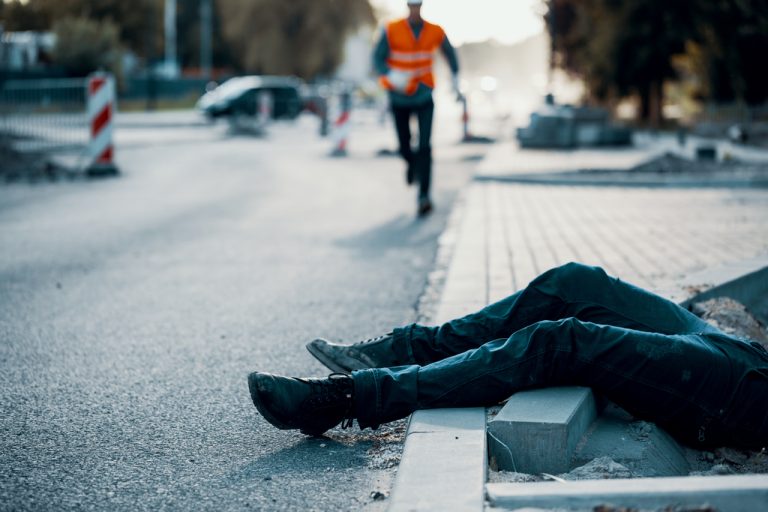A recent decision of Justice Mitchell of Ontario’s Superior Court of Justice has re-affirmed that a plaintiff in a slip and fall case is not required to pin point the exact cause or mechanism of the fall to succeed in establishing liability on a defendant.
In Branton, the defendant was involved in a municipal infrastructure project involving the installation of sewers and related road and curb work. The construction resulted in residents, including the plaintiff, having restricted access to their driveway while curbs were being poured. A rope between two temporary poles was placed as a barrier preventing passage to the roadway.
To facilitate access for the injured plaintiff’s spouse on the date of loss, a portion of the rope between two poles was removed and a temporary ramp was constructed from the driveway over the apex of the newly poured curb and onto the roadway. Several hours later, the plaintiff, unaware of this temporary construction, departed his house late at night and tripped as he passed between the opening in the ropes. He did not know precisely what caused him to fall.
There were no photographs or measurements taken of the temporary ramp at the time of the loss. Therefore the description of what was built and how it was built was based on the evidence of the injured plaintiff’s spouse who watched it being constructed. She was only able to provide estimates of ramp dimensions but was able to describe the manner in which it was constructed. The evidence was uncontroverted that the defendant constructed the ramp ‘on the fly’ and did not rely on any set procedure for construction of this kind.
The plaintiff testified that when he fell it was night time and the area was poorly lit and was able to describe the mechanism of the fall as follows:
I got to the pathway, and I walked through the opening, because I’ve seen the way it was open, and then as soon as I walked to go through the pathway, then as soon as I went through
that opening I tripped, or whatever, and I fell down. And I got up, and I tried to put weight on my foot, and I felt pain in my toes, and I didn’t put no weight on it.
The defendant argued that the plaintiff’s inability to describe what caused him to fall is fatal to the case because he could not prove that there was any hazard proximate to where he fell. The court disagreed, noting:
[66] Although Mr. Branton cannot say specifically what caused him to fall, he knew the precise location of his fall. The uncontradicted evidence places him stepping into the
construction zone where the ramp was constructed earlier that day. It is not disputed there was a drop off on either side of the temporary ramp.
[67] It is not disputed that Mr. Branton fell as he stepped through the opening between the poles. It is not disputed that Euro-Ex removed the rope between the poles to allow the
plaintiffs access from their driveway onto Maple Lane. It is not disputed Euro-Ex constructed a temporary ramp between the poles where the rope had been removed. Euro-Ex has produced
no evidence suggesting an alternative cause of Mr. Branton’s fall other than the design and construction of the ramp.
In this instance, the evidence was clear that the defendant, in constructing a temporary ramp had created a hazard and the court made that express finding. The court noted that the duty to keep premises in safe are fact specific in each case and in this instance the standard was informed by the following:
In this case, I have considered the absence of policies and procedures related to the construction, maintenance and inspection of potential hazards including temporary ramps and the admitted absence of any visual aids (pylons or demarcations) or additional lighting to assist pedestrians to safely traverse the temporary ramp and illuminate the width of the ramp
and therefore the drop-off.
This decision is consistent with the Court of Appeals’ decision in Kamin v. Kawartha Dairy in which an occupier was still found liable where the plaintiff was unable to recall the precise location of a fall in a parking lot that was found to be in a state of disrepair. The decision reinforces the importance of an occupier’s policies and procedures aimed at ensuring premises are maintained in a reasonable state.
The decision in Branton v. 2008422 Ontario Limited can be found here.





